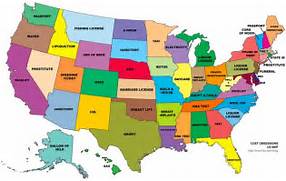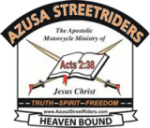I greet all of you in the name of Jesus Christ. I pray this month’s edition of Rumbling’s finds each and every one of you spiritually sound and in good health. I would like to thank all of you for your prayers for me over the last month today is the best I have felt in several weeks and I give God all the glory.
Well Spring is in the air and for many that implies the start of the 2018 riding season. We already have several activities in play on the web site and FB. First let me say if your planning an ASR event please get it up on the web or FB for all to see, you never know who might show up. In addition let me encourage everyone to please partake in at least one or two scheduled ASR event sponsored by our different chapters.
As many of you know a lot of time, effort and money goes into these events and we need to do our best to support the ASR events we can. I know we cannot attend them all and I also know it might be a sacrifice but the time and effort will be worth it. To be honest several of our members try to attend, as many as they can. Sometimes not even letting them know their going to be there only to see the surprise and joy in sponsors faces when they pull up. The reason is they know that person made the effort and yes it can be an effort, but the fellowship and your support is worth it all.
I for one have been on the receiving end when I have held an event and had a great turnout you know what forgive my pride Lord but it felt good that so many sacrificed just to support something we were attempting to do. And it goes both ways I have also experienced if you support someone else’s event than chances are when you hold one many of those same chapters that you attended will attend yours. That kind of how it works.
In conclusion I would like to ask all our chapters that already have or are planning an event. We must be about our Father’s business. So I would like to see in every event time set aside for outreach of some sort. We must remember what were all about and that is doing our part to help save lost souls. If we do not build in that opportunity for focused outreach than well it’s just a day ride. There is nothing wrong with that however I would like us to be more aware than that. It’s fine pulling into a gas station or restaurant and having someone ask about our back patch, that is what it’s there for. What I am asking is deliberate seeking for lost souls. I’m not talking hours but if we can set aside a fifteen minutes to maybe a half hour to hand out a few tracks and maybe a one on one, you never know where that leads. This is our mission field let’s work it the best we can.
Let’s Make America Great Again. God Bless America and God bless you and yours.
Robert Thompson
President Azusa StreetRiders International
The Apostolic Motorcycle Ministry of Jesus Christ
email: robert.thompson@AzusaStreetRiders.com
Home: 865-376-0045
Cell: 305-525-4877











